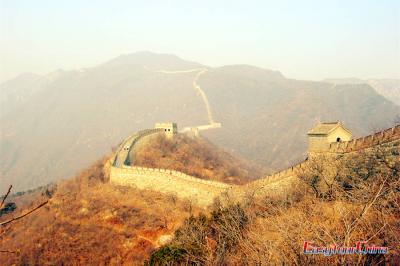China Jewish Tours
The Jewish Tours in China combines the most popular destinations like Beijing Xian or Shanghai with unique visit to Zhengzhou, Kaifeng, Harbin, cities that had a thriving Jewish population.Take a tour with us to understand the remarkable history of Jews in China by visiting sites of cultural, historical and political significance. We will highlight their migration and experiences.
-
Discover the Jewish history in China by taking this heritage tour! A unique trip presents the Jewish cultural legacy in China, and discovers the century-long relationship between the two ancient cultures. Come to Harbin, Kaifeng, Luoyang & Shanghai, this trip offers unforgettable experience by combing the stunnin ...
Viewing Trips 1 1/1 pages
Useful Tips & Guide
Brief Introduction to Jewish heritages in ChinaShanghai
The first major wave of Jews, primarily from Baghdad and Bombay, came to Shanghai after the city was opened to foreign traders in 1842 following the Opium War. A second wave of Jewish immigrants came from Russia in the decades following the 1917 Russian Revolution. The third wave of Jews moved to Shanghai from central Europe in the 1930s and during WWII. The stream of Jewish refugees increased after Kristallnacht and became a flood in 1939. By 1941, about twenty thousand refugees from Germany, Austria, and Poland had arrived in Shanghai. From 1933 to 1941, this city accepted about 30,000 Jewish refugees coming from Europe, more refugees than those taken in by Canada, Australia, New Zealand, South Africa and India combined during World War II.
Harbin
After the eastern branch of the Siberia Railroad was constructed in the 19th century, many Jewish people came from Russia and other Eastern European regions to Harbin. When the Russian Revolution broke out in 1917, many more Jewish people arrived, and by 1920, there were more than 20,000 Jewish people in Harbin.
The Jews quickly developed their culture in Harbin, China’s northeastern industrial center. With the establishment of synagogues, stores, banks, hospitals, theatres, libraries, tobacco factories, beer factories, charities, insurance companies and publishing houses, a complete Jewish social system was formed, bringing something new to the city. Harbin’s 19th and early 20th century architecture showed strong characteristics of this Jewish presence, including a well-kept Jewish synagogue on Tongjiang Street of the Daoli District.
The local government invested time and money to protect the Jewish relics. The old Jewish school is now a First Class Protected Building (the highest ranking protection by Chinese authorities). When Harbin’s Cultural Park in Nangang district underwent reconstruction, the local government invested millions of Yuan to move a Jewish cemetery from the park to the eastern outskirts of the city. Today, the relocated Royal Hill Cemetery is well-preserved and protected. The Israeli government and Jewish guests from around the world have been deeply touched by what the Chinese people of Harbin have done for those who came to seek refuge from persecution.
Harbin became an asylum for Jewish people in the 19th century, and the local residents willingly protected their heritage. After World War II, large numbers of Jews moved overseas and now they primarily live in Israel, the US, Australia and European countries.
Kaifeng
At the beginning of the Song dynasty (960-1127 CE), a thriving Jewish community took root in the Song capital of Kaifeng (called Dongjing at the time).
The Jews of Kaifeng asked their Chinese neighbors to call them yi ci le ye (that is chinese transliteration for Yisrael), and they initially maintained close contact with their native communities. When the Jews first arrived in Kaifeng, an emperor of Northern Song Dynasty (960-1127) issued an edict to the Jewish immigrants, telling them to “keep and follow the customs and habits of your ancestors and hand them down in Dongjing (Kaifeng’s ancient name).” The Emperors in the following dynasties bestowed upon them different Chinese surnames.
The immigrants practiced Judaism and built a synagogue in 1163. The 1489 inscription of a stone tablet of the Synagogue commemorates the Jewish traders’ audience with the emperor, who ordained them to revere and preserve the customs of their forefathers. An inscription on the back of the stone tablet, dated 1512, suggests the existence of Jewish settlements in other parts of China. The synagogue became dilapidated gradually and fell in ruin around 1850’s. The flood of 1849 destroyed the remaining ruins of the synagogue, and it was never rebuilt again.
Kaifeng Jews integrated certain Confucian customs into their own monotheistic religion. The Jewish elite found they had less time to study Torah as their livelihood and status were dependent upon the concentration of Chinese classics. These Torahs were eventually sold to Christian missionaries. The Torahs that are known to have survived are in Oxford University, Toronto University, Southern Methodist University, American Bible Society, Hebrew Union College, and the Jewish Theological Seminary. A Chinese-language Torah of the Kaifeng synagogue is now in the British Museum in London.
Today only three surviving stone steles remain among the ruins of the Kaifeng synagogue, rebuilt for the final time in 1653. Rare pictures of the synagogue can be found by visiting Mini-Jewish Museum in Kaifeng (that is also Kaifeng Jewish Community Center).
Source: http://www.jewishfederations.org
Google Search
Find something useful to you at Easy Tour China website.










